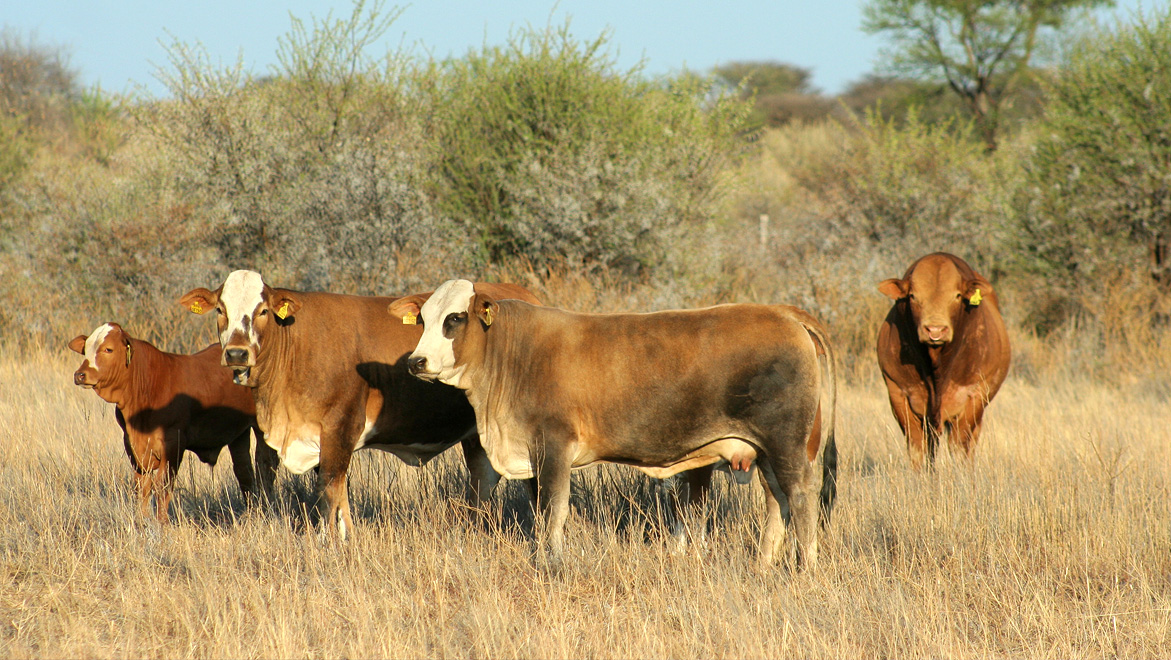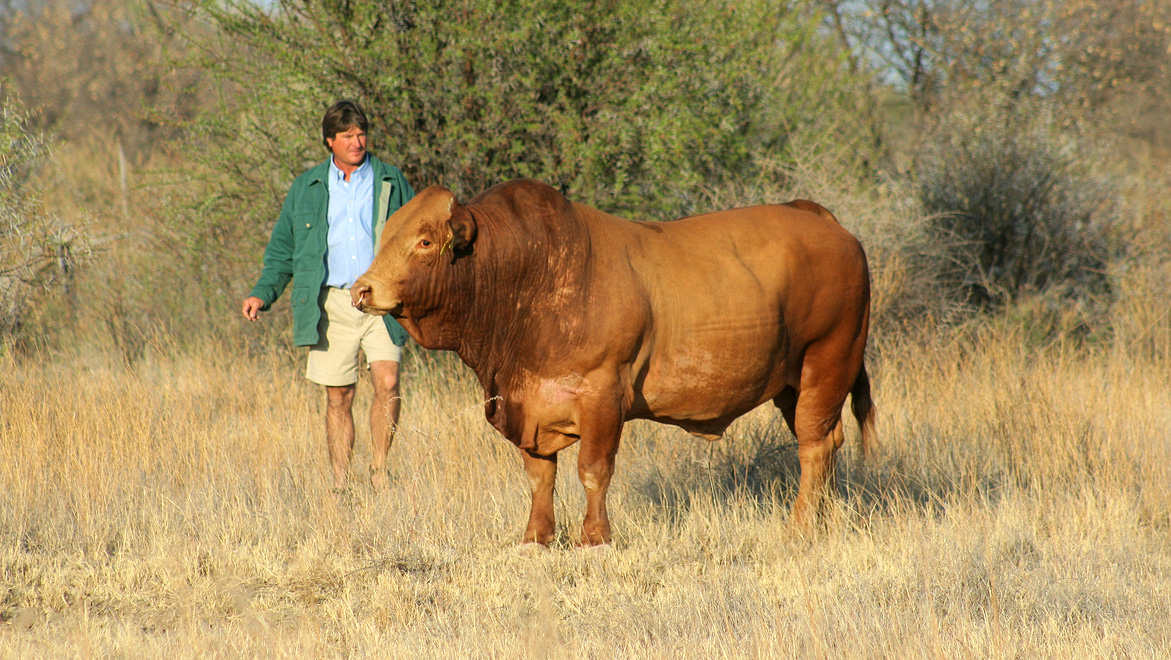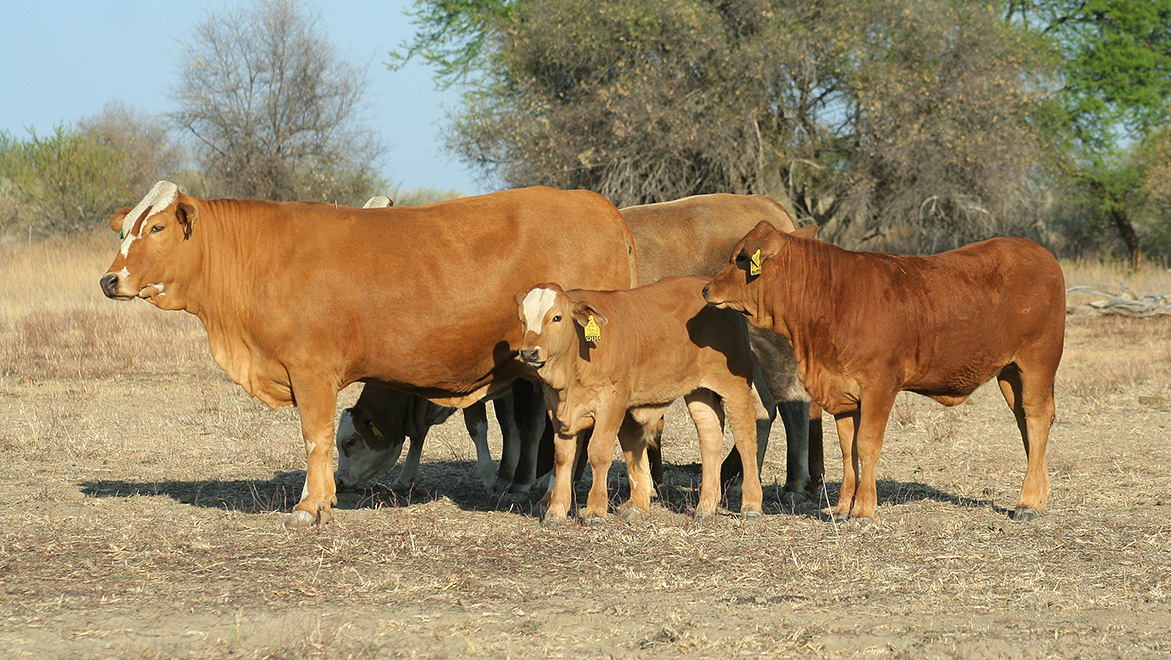Having experienced the advantages of different cross breeds during Diethelm’s studies in Pretoria, South Africa, and Texas A&M, USA, as well as the very dry and harsh conditions in Namibia gave rise to the idea of developing a cattle breed which would be well adapted to the environment and the market conditions of the cattle industry in Southern Africa.
Looking at the genetic availability in Namibia the choice was easy: Namibia had well established Brahman and Simmental herds. The combination of these two Breeds was also predominantly used for the Namibian Slaughter market as well as for our Weaner production system. The combination of these two Breeds also made sense in terms of the characteristics that they brought along. The Simmentaler had the milk for good growing calves and also the growth and conformation to produce heavy Oxen/Steers. The Brahman brought the advantage of being well adapted to our environment (heat resistance, good walking ability and a short hair for less parasites) and the ability to produce earlier maturing carcasses.
Our idea was to select the animals with the characteristics that we wanted and stabilize the favorable genes over, in the early stages six generations, and later four generations. The advantage of using a Simbra in comparison to a crossing system is that you at all times have the right blood composition of the respective parent breeds to produce an optimal animal for the market. In a cross-breeding system one will always have to much blood/genetics from the Sire’s Breed and thus will not be in a position to optimize production.
Aside from producing a genetically superior animal, one also has the ease of management advantage.


